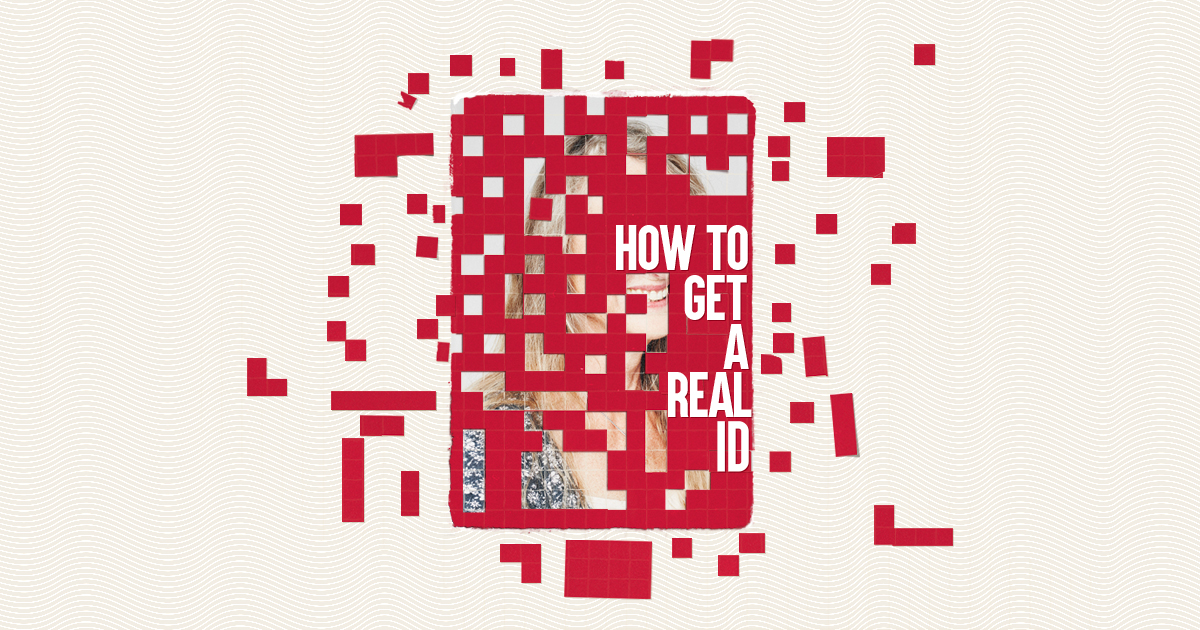
Have you been hearing more and more about the Real ID recently, especially with the new Real ID deadline? If you aren’t sure what it is, if it’s really necessary, or how to get a Real ID for yourself, read on to find out how this new identification requirement might impact your travel in the future.
What is the Real ID?
The Real ID Act is legislation passed in response to 9/11, meant to increase security measures in domestic travel. It requires people to show enhanced identification when passing through airport security or when entering some federal facilities like military bases.
Note: You will also be able to use passports or other specific federal documents as an alternative to a Real ID when traveling.
When do Real ID requirements go into effect?
There was an original Real ID deadline of October 1, 2020, however, with recent social distancing and self-quarantine regulations, the new Real ID deadline has been postponed until October of 2021. Once that new Real ID deadline does pass, travelers will need to present a Real ID instead of a regular driver’s license to get through airport security for domestic flights.
The Department of Homeland Security reported that as of January, 95 million driver’s license holders have gotten Real IDs, leaving 181 million people who still need to upgrade their IDs by the new Real ID deadline next year.
What documents do you need to get a Real ID?
A recent survey by the US Travel Association revealed that most Americans are confused about what’s actually needed to obtain a Real ID. Over half of respondents said they didn’t know about a Real ID deadline, and nearly 40 percent reported that they didn’t have alternative documentation on-hand, like a passport.
To obtain a Real ID, you will need to present documents to your DMV to prove:
- Age and identity
- Social Security number
- Address
Necessary documents include:
- Birth certificate or passport
- Social Security card or tax form such as a W-2
- Two proofs of address that include your name
- This could include a lease/mortgage, medical documents, utility bills (including cell phone), etc. Check with your state guidelines for more details.
Note: If your name has changed due to marriage or divorce, you’ll need to provide a marriage certificate or divorce judgement.
What should you do before getting a Real ID?
Some states may have additional requirements for obtaining a Real ID, so make sure to visit your state’s licensing agency website for more assistance and to learn exactly what documents you’ll need to get a REAL ID. You’ll want to make sure you have all documentation on-hand before visiting them in person. You can also check the compliancy status of your state with this color-coded clickable map on the DHS site.
Things to know depending on your location:
- Residents of Maryland 65 and older are allowed to present documents other than a birth certificate to prove identity, which includes military discharge paperwork.
- Michigan, Minnesota, New York, Vermont, and Washington residents who have enhanced driver’s licensescan use them to go through airport security. These licenses are only available in the states listed and allow holders to enter the U.S. from Canada, Mexico, and the Caribbean.
How do you know if you have a Real ID or a standard driver’s license?
Visually, the Real ID isn’t much different from current driver’s licenses, with the exception of a star or other marker in the upper right corner. The biggest difference in a Real ID and a regular license is the process, making the Real ID more secure from a federal standpoint. If your ID does not have these markings, they are not Real ID compliant and you will not gain entry to commercial aircrafts with your normal license after the new Real ID deadline.
What to keep in mind while planning your future trip to the DMV:
- People have been turned away because the name on their identifying documents did not match exactly, so double check all of your items before you head out. (Ex: Do all documents have your full middle name or just middle initial?)
- Across the country, DMVs have noted a surge in wait times due to the previous impending Real ID deadline. The process is reportedly taking much longer than with previous ID renewals, even for those who have made appointments.
- Most recently, the DHS announced that it will allow states to accept documents for Real ID applications electronically in an attempt to simplify the process. This does not mean the card can be obtained electronically. Going to the DMV in-person is still required to complete registration, but you can safely upload your documents from home.
Seniors will not need the Real ID for the following:
- Application to receive federal benefits (Social Security, etc.)
- Entrance to a federal facility that doesn’t require ID (like the post office)
- To use public ground transportation
- To visit a hospital
With the new Real ID deadline on the horizon, it’s a good time to decide if you need a card for yourself, and to gather your necessary documents for any future DMV visits. Keeping this information handy can keep the task from becoming overwhelming.
If you need more assistance and information on the Real ID, visit the DHS website.





